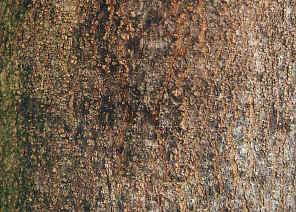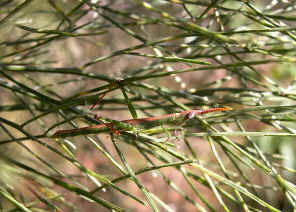|
|
Mimicry, Camouflage and Deceptive Behavior
- There are three strategies for fooling predators;
- 1. To mimic a species that is distasteful or threatening to a predator.
- 2. To camouflage, blending into the background.
- 3. To use deceptive behavior whenever a predator is about to attack.
Mimicry
- To look, act, smell or sound like something else, such as another organism or other natural object, it is a form of deception practiced by a variety of animals, to gain some advantage of protections. For many animals, including insects and spiders, a key problem is how to eat without being eaten. By mimicking something else, they gain some protection and increase their chances of survival.
- In the Insects and Spiders world, the term mimicry is commonly applied to the resemblance of one insect or spider (called the mimic) to another (called the model) so that a third insect or other observer is deceived into confusing the two.
- Comparing mimicry with camouflage or deceptive behavior, animals that are protected by
mimicry are the most cost effective. They do not have to change their behavior or stay against a safe background to disguise themselves.
Their appearance tell their predator to keep away. They can go about their daily
life with extra protections.
There are different types of mimicry;
- Batesian Mimicry


- Batesian mimicry involves a palatable, unprotected species (the mimic) that closely resembles an unpalatable or protected species (the model). One example is this fly which looks like a bee. Birds know not to attack a bee as they will be stung.
- Mullerian Mimicry


- In Mullerian mimicry, the model is not defined and several unpalatable species share warning colors or patterns to evade predation. Both models and mimics are toxic. Several species from several different orders may comprise a mimicry complex. The advantage is that the predators need only encounter one form to shun the entire complex.
- Wasmannian Mimicry


- Wasmannian Mimicry is when the mimic resembles it's host (the model) in order to live within the same nest or structure. For example, several jumping spiders closely resemble ants. In order to get "lost in the crowd" and thus avoid predators.
- Peckhamian mimicry


- This is also known as aggressive mimicry, in which the model is the prey of the mimic. The predator mimics its prey to capture it. The most known example is Bird-dropping Spider. This spider hunts definite species of moths. The spider has specific glands on the abdomen which produce analogous of moths’ pheromones. Moth males allured by the pheromone fly towards the spider.
Camouflage
- To look, act, smell or sound such that it blend in with their surroundings.
- Followings are some examples of visual camouflage. All the hiding insects/spiders are at (or near) the centre of the pictures. Check how much time your need to find out what they are. It is easier to click on the images and look at the larger size pictures.






Deceptive Behavior
- To display unusually pattern, which is weir to the predator, includes colour, pattern, sound, chemical (smell), to increase their chances of escape and survival.


- In some cases, frightening eyespots or bright colour markings appear, particularly on the under-wings of Moths and Butterflies. Birds encountering these prey are startled and jump back, which may give the prey a chance to escape. Here, the effect seems to be a kind of mimicry of the sudden nasty shock that a predator's own predator might give it.


- The katydid was slow moving and seems can not jump like other katydid. When disturbed, it drop onto the ground and displayed it colour-banded abdomen.
-
- Followings pages are the details of examples about Mimicry, Camouflage and Deceptive Behavior.
